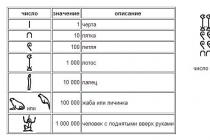Wikipedia says that localization is the translation and cultural adaptation of a product to the characteristics of a particular country, region or population group. And this is the most damn short and accurate definition that the world has seen. Under this mysterious phrase "cultural adaptation" there is a whole lump. Proper localization of a product requires an in-depth study of the target culture. Then the program / game / book / film will be correctly adapted to the needs of the market and understood by the end user.
In our country, localization is presented primarily as a translation, but, of course, it is much more than a translation. In addition to translating the game into another language and adapting it culturally, technically, it may be necessary to adapt it even in the legal framework of the target country.
For example, in Germany, the use of Nazi symbols is prohibited at the legislative level. This means that the image of the swastika will have to be removed from the game intended for distribution in Germany. For example, international proceedings are known concerning the Wolfenstein series of games for PC and for devices on the iOS platform. Wolfenstein 3D for iOS platforms (2011) was removed from the App Store in Switzerland and Austria due to the presence of a swastika. However, Wolfenstein has been censored before. For example, in the 1994 version of the Super Nintendo, all the swastikas were removed from the Nazi castle, and the guards' dogs turned into rats. In the same 1994, the game was banned in Germany. The PC version of Wolfenstein: The New Order (2014) for Germany and Austria, unlike the international version of the game, was also censored. And in Wolfenstein II: The New Colossus, censorship went even further. Hitler's mustache was taken away, he was called the chancellor, and the swastika was replaced with a three-pointed symbol.
However, translation is too general a term. So, Wikipedia assigns the same qualities to translation as localizations:
The purpose of translation is to establish an equivalence relationship between the original and the translated text, as a result of which both texts carry the same meanings based on the cultural and usual characteristics of the languages in which they are created. Among the main factors influencing the translation, the context, the main levels and grammatical structure of the source and target languages, the traditions of written and oral speech, phraseological turns, etc. are distinguished.
Let's take a look at what is typical for translation and what is for localization point by point.
Translation can sometimes afford a literal interpretation, while localization should always replace an idiom with a similar one that will be understandable to people. In other words, translation and localization still have different goals. The first is to translate the essence and meaning of the message, the second is to convey the original meaning, taking into account many factors that can affect the experience of the product.
In the blog of the translator and localizer Anikiev there is an example on which you can well understand the intricacies of localization. The example is based on translations of Allen Carr's book The Easy Way to Quit Smoking:
The first was to end the recurring nightmares that plagued me every night. I dreamed that I was being persecuted ... When I described that every night someone was chasing me in my sleep, I once typed instead of “persecution” - “chastity”. It may have been one of the "Freudian typos," but it gave me a hint about the best way to get to the second advantage.
Do you not understand how you can get a seal like that? The secret is revealed by a footnote, which in different versions of the book may appear both at the bottom of the page and at the end of the book:
The words "persecution" (chase) and "chastity" (chaste) in English differ only in one letter.
Another translator acted more beautifully, who localized rather than translated this part. Check it out, this neat solution makes sense and removes the unnecessary footnote:
I dreamed that I was walking on a fragile floor ... When I described that in a dream I was walking on a fragile floor, I once typed instead of “fragile” - “immaculate”.
This is localization.
Original
Translation

Localization

Our senior editor Aleksey Medov, in his lecture for the Higher School of Biology, classified the types of localization according to the degree of depth, and this is what happened:
The most superficial - "box localization"
If the game is released on a physical medium and sold offline, what is written on the package is localized. If it is sold not on a physical medium, but on a platform, then its page in the store is translated: description and screenshots. Box localization is limited to this.
Interface localization
It means that not only the description and the box will be translated in the game, but also the interface, the help page, the names of the buttons - and that's it. A bit strange kind of localization, which implies that you press the "Play" button in Russian, but the plot will be completely in another language. But, nevertheless, it is quite common.
Text localization
All texts in the game are translated. An example is GTA V. The game has been translated down to subtitles, so you, on the one hand, can listen and try to understand the African American slang in the game, but you still see subtitles in Russian.
Localization with voice acting
Speech and dialogues are translated and voiced by Russian actors. If the localization with voice acting is done at a good level, it is not perceived as something foreign.
Graphic localization
Any game represents some kind of engine, design, graphic objects, textures - everything that is not text. Let's say the inscription on the fence in a shooter. Graphic localization implies that all inscriptions inside must be translated. These can be newspapers, shop signs, some notes, and so on.
What to do with games that are set in a specific location?
For example, if the action takes place in Hong Kong, Russian signs will look strange there. In this case, everything depends on the wishes of the customer and common sense. For example, if periodicals have any meaning, they must be translated, otherwise an important point will be lost. If you are playing a detective story and some newspaper notes help in the plot, they, of course, must be translated. But at the same time, if you are walking in some real setting, for example, in Berlin during the Second World War, the inscriptions on the walls in German do not need to be translated into Russian.
Deep localization - cultural adaptation
This is a cultural adaptation, when the game is completely redone. All that remains is the hardcode and mechanics. You can remake the textures, plot, dialogues, character models and make a completely different game on the skeleton of some engine. This is done quite rarely, but nevertheless this method of localization is found, including in the portfolio of Inlingo Game Localization Studio there is also such a project. This is done in cases where a game without such adaptation is not able to be perceived by the audience and sold in any market. In particular, our project was a game about the Chinese history of the era of the Three Kingdoms, which is incomprehensible to Russians (and not only Russians). The game was completely remade: there was ancient China - it became sci-fi.
Conclusion
Thus, localization is one of the deeper and more complex types of translation, but it can in no way be interchangeable with translation. These are two different tools, two different approaches for solving different problems, but at the same time, localization always means translation as well, but translation does not mean localization. We hope that this time you have no questions left, and if you still have - ask them in the comments, share your opinion - we are always happy to discuss your favorite topics.
If you find a typo, select it and press Ctrl + Enter! To contact us, you can use.
“Localization” - for many people today this word seems rather strange and incomprehensible. However, despite this, localization has an impact on our global economy all the time, and this element has already been the key to our success in international business. Have you ever wondered why Google couldn't beat Baidu in China? The answer is simple: language limitation. Using only clean translation, is it possible to ensure that our products and services are accepted by the market that we have targeted for promotion? Answer: “No. This is not enough". It is site localization that plays an important role in the growth of our business, in its prosperity.
What is localization? According to various definitions given in dictionaries, on websites, localization refers to the process of adapting a product or service to a country's target market. The localization process involves translation, but it is much more than just “translation”. It also takes into account geographical features, local characteristics, currency, and takes into account other significant factors.
For example, if you want your site to be accepted by the intended market, then you must, in addition to translating the website, also do the following:
- localization of the website structure;
- localization of website content, in particular: multimedia localization, webcasting, etc .;
- website style localization;
- SEO website optimization;
- etc. etc.
Is a translation company capable of offering all website localization services? Definitely not. Only companies with rich experience in localization, a strong team of linguists using special know-how, could achieve, for example, Golden Performance. Be sure that if the localization is successful, your product or service will be considered by the target audience as a product and service originally intended for this country and produced in it. Thus, the efficiency of the business, sales, will increase significantly.
What is the difference between language localization and translation?
Many people think that localization is high-tech translation. It is not that simple. This special language service is a rather complex, important, multi-faceted process. In addition to a rigorous translation process, localization services help dramatically improve the essential, non-textual components of products and services, such as the physical structure of the product, time and date forms, and more. Thus, products and services have the appearance of local products and services in the country of destination, consistent with local culture and traditions.
After the advent of computers and the Internet, translation began to require even larger amounts of information - translation of websites, computer programs, games, etc. Hence, a new, not fully formed scientific direction appeared - localization.
Localization (from the English localization - software) is not just another name for translation, it is a completely new discipline that is trying to help people learn and navigate the Internet, as well as in the computer. To clarify the nature and essence of localization, we formulated the following definition: localization is a kind of translation activity in the form of cultural and linguistic adaptation of a product in the field of computer science, cybernetics and related sciences.
The purpose of the localization process is the linguistic and mainly cultural adaptation of the product to the territory of its distribution by means of various computer programs. To achieve this goal, it is necessary to solve research problems in 2 directions:
1. study of the specifics of computer discourse.
2. study and implementation of translation models that focus on the transfer of cultural aspects of meaning in the translation text.
Let's briefly dwell on each direction. Following the scientist A.V. Trembling, we define computer discourse as communication on computer topics in the network. In his study, the emphasis is on the specifics of computer terms, jargons, professionalisms and slangisms.
As for the second aspect, we rely on the developed by L.V. Kushnina's concept of translation space and the theory of harmonization. Within the framework of this concept, localization, as a kind of translation activity, requires cultural adaptation. Therefore, in the context of localization, the most important is, first, a meaningful field, so as not to distort the meaning of this field. Secondly, the field of the recipient, since the bearer of another culture must adequately understand the author's intention, and thirdly, the phatic field in order to convey the cultural meaning as much as possible. Their synthesis (synergy) can lead to harmonious translation.
A specialist who deals with localization (localizer) must combine the knowledge of a translator and an engineer, understand computers and speak the language, possess the necessary information tools in order to understand the materials that need to be localized, for example, change menus, images, message box, etc. .NS. There are already several courses for training localizers - in Canada and Germany, in Ireland and America.
There are three levels of localization:
1. Provide support for the language and national standards, the minimum required for the program to perform its functions in another country (displaying language characters, text input, alphabetical sorting, string operations, etc.)
2. Translation of texts in the program interface into the target language.
3. Fine tuning for the target country (work with word forms, additional standards that do not affect the main functionality of the program, taking into account the national mentality, etc.).
For further clarification of localization and speech activity, we will give a definition of speech activity and establish the role of language in speech activity. According to the definition of A. N. Leontiev, “speech activity is an active, purposeful, motivated, objective (meaningful) process of issuing and (or) receiving, formed and formulated through the language of thought (expression of will, expression of feelings), aimed at satisfying the communicative and cognitive need a person in the process of communication "(Leontiev AN," Psychological study of speech ", 1935).
As research by IK Sitkareva has shown, the role of localization in translation is to adapt the text. Based on the researcher's work "Lacunae in a literary text: a linguoculturological study", adaptation is a range of strategies for interacting with an interpreted sign that forms in the mind of a translator, the main loci of which are adaptability as the orientation of translation to the culture-receptor and resistivity as the orientation of translation to the culture-source. This range is presented in the mind of the translator as a set of potentially possible translation solutions, from which he chooses the most appropriate in relation to the specific conditions of intercultural interaction.
At the same time, the communicative space of intercultural interaction remains fundamentally open for repeated interpretations.
Language localization(from lat. locus- place) - translation and cultural adaptation of the product to the characteristics of a particular country, region or population group. Moreover, “product” means any product or service. Localization is the second phase in the overall internationalization and localization process. It also provides for a comprehensive study of the target culture, necessary for the correct adaptation of the product to the needs of individual markets.
Often times, the localization process boils down to the translation and cultural adaptation of software, video games, or websites. Much less often, this term is applied to the translation of texts, which, however, also implies cultural adaptation. Product localization can be carried out not only in countries and regions where the population speaks a foreign language, but also in cases where the language remains the same, for example, different dialects of Spanish in Spain and Latin America, in which idiomatic expressions differ. Likewise, the choice of idiomatic expressions may vary from country to country where the official language is English (USA, UK, or Philippines).
The abbreviation is sometimes used to denote localization. L10N(where L is the first letter, 10 missing letters, and N is the last letter).
General process: internationalization, globalization and localization
Internationalization, globalization and localization are based on two main technical processes.
The first step is internationalization. It covers the planning and preparation phase of a project, during which it is adapted for the international market. The goal is to eliminate all cultural characteristics so that the product can easily adapt to any linguistic environment or country. If regional features were not completely removed at the initial stage, this must be corrected during localization, which will lead to additional costs of time and money. In some cases, a product that has not been globalized cannot be localized.
At the second stage, the product is directly adapted to a specific market. According to the classification proposed by the Localization Industry Standards Association (LISA), localization includes the following aspects: linguistic, physical, business, cultural and technical. At the end of this phase, quality assurance testing is conducted to ensure that the product is performing correctly and meeting customer expectations.
According to the LISA definition, globalization "can be better represented as a cycle than as a linear process." To globalize means to think ahead about the project and the methods of promoting the product, taking into account the multinational audience, in order to avoid the increase in cost and quality problems, as well as save time and reduce the amount of effort spent on localization in each country and region. Localization is an integral part of the overall globalization process.
Translation and localization
Localization is often viewed as "high-level translation", but this does not reflect the importance and complexity of this process, or all that it includes. Although it is sometimes difficult to draw the line between translation and localization, in general, localization is carried out to a large extent for the extra-textual components of a product or service, but if localization is nevertheless necessary, then this concept is broader than the concept of “translation”. In addition to translation (that is, grammar and spelling issues that vary by country and place where the same language is used), the localization process may include adapting the graphics component, currency symbols, date format, addresses and phone numbers. choice of colors for many other details, including revision of the physical structure of the product. The concepts of translation and localization can also exist separately from each other.
All these changes are carried out with the aim, firstly, to identify sensitive differences and avoid possible conflicts with the local culture and population, and, secondly, to penetrate the local market, adapting to local needs. For example, as a result of localization, the website of the same company may be adapted to a specific country, or editions of the same book may differ depending on the place of publication.
Globalization and localization
Considering that localization is the process of adapting a product to a specific environment, globalization models the product in such a way as to minimize the additional work of localizing it. Suppose someone works for a company that until now has only worked in the United States. This company is opening a head office in China and needs a website in Chinese. It offers the same product, with minor changes, in both countries, but it is possible that some of the elements present on the original site may seem offensive or displease the Chinese people, for example, the use of flags, colors or national symbols, sounds. Therefore, the company may lose part of the market due to minor details of the presentation.
Moreover, the company needs to adapt the product to the needs of new customers, the best example of which is computer games.
Now suppose a company opens offices in a dozen countries and needs to adapt its website to the needs of all those countries. Before deciding how to localize a site and product in each of these countries, a professional in this field should suggest that the company develop an overall strategy: to globalize the management of the company. The company may decide to create a structure to organize and support the global strategy. This will provide a unified leadership for 12 separate localized offices.
Write a review on the article "Language localization"
Notes (edit)
Links
An excerpt characterizing language localization
Suddenly it darkened sharply. Blue-black clouds rushed across the sky, as if driven by a strong wind, although there was no wind yet. In the depths of the black clouds blazing lightning blazed, the tops of the mountains blazed with a red glow ... Sometimes the swollen clouds ripped open against the evil peaks and dark brown water poured from them like a waterfall. This whole scary picture reminded, the most creepy of the creepy, nightmares ...- Daddy, dear, I'm so scared! - screeched thinly, forgetting his former belligerence, the boy.
Suddenly one of the clouds "broke", and a blindingly bright light blazed out of it. And in this light, in a sparkling cocoon, the figure of a very thin youth, with a face sharp as a knife blade, approached. Everything around him shone and shone, from this light black clouds "melted", turning into dirty, black scraps.
- Blimey! - Stella shouted joyfully. - How does he do it ?!
- Do you know him? - I was incredibly surprised, but Stella shook her head.
The young man sank down next to us on the ground and asked with an affectionate smile:
- Why are you here? This is not your place.
- We know we were just trying to get to the top! - already in full twitter the joyful Stella. - Will you help us get back upstairs? .. We definitely need to get home quickly! And then the grandmothers are waiting for us there, and now they are also waiting, but different.
The young man, meanwhile, for some reason very carefully and seriously examined me. He had a strange, piercing look, which somehow made me uncomfortable.
- What are you doing here, girl? He asked softly. - How did you manage to get here?
- We were just walking. - I answered honestly. “And so they were looking for them. - Smiling at the "foundlings", she pointed at them with her hand.
“But you’re alive, aren’t you?” - the savior could not calm down.
- Yes, but I've been here more than once. - I answered calmly.
- Oh, just not here, but "above"! - laughing, my girlfriend corrected me. “We certainly wouldn't return here, would we?
- Yeah, I think this will be enough for a long time ... In any case - for me ... - I was already cringing from recent memories.
- You have to get out of here. - Again, gently, but more insistently said the young man. - Now.
A sparkling "path" stretched from him and ran straight into the glowing tunnel. We were literally drawn in, without even having time to take a single step, and after a moment we found ourselves in the same transparent world in which we found our round Leah and her mother.
- Mom, Mom, Dad is back! And Great too! .. - little Leah rolled head over heels towards us, tightly clutching the red dragon to her chest .. Her round face shone with the sun, and she herself, unable to keep her stormy happiness, rushed to dad and, hanging on him neck, squeaked with delight.
I was happy for this family that had found each other, and a little sad for all my dead “guests” who came to earth for help, who could no longer hug each other as joyfully, since they did not belong to the same worlds .. ...
- Oh, daddy, here you are! I thought you were gone! And you took it and found it! How good it is! - the shining little girl squeaked with happiness.
Suddenly a cloud flew into her happy face, and it became very sad ... And in a completely different voice, the baby turned to Stella:
- Dear girls, thank you for your dad! And for the little brother, of course! Are you going to leave now? Will you come back sometime? Here's your dragon, please! He was very good, and he fell in love with me very, very much ... - it seemed that right now poor Leah would burst into tears, so much she wanted to hold even a little bit more of this lovely marvelous dragon! .. And he was about to be taken away and there will be no more ...
- Do you want him to stay with you? And when we get back, will you give it back to us? - took pity on the baby Stella.
At first Leah was stunned by the unexpected happiness that fell on her, and then, unable to say anything, she nodded her head so much that she almost threatened to fall off ...
Having said goodbye to the joyful family, we moved on.
It was incredibly pleasant to feel safe again, to see the same joyful light flooding everything around, and not to be afraid to be unexpectedly seized by some scary-nightmarish horror movie ...
- Do you want to take a walk? - Stella asked in a completely fresh voice.
The temptation, of course, was great, but I was already so tired that even if it seemed to me now the greatest miracle on earth, I probably could not really enjoy it ...
- Well, okay, another time! Stella laughed. - I am also tired.
And then, somehow, our cemetery appeared again, where, on the same bench, our grandmothers were sitting side by side ...
- Want to show me something? ... - Stella asked quietly.
And suddenly, instead of grandmothers, incredibly beautiful, brightly shining entities appeared ... Both of them had amazing stars on their chests, and Stellina's grandmother had an amazing miraculous crown shining and shimmering on her head ...
- They are ... You wanted to see them, right? - I nodded dumbfounded. - Don't tell me what I showed you, let them do it themselves.
- Well, now I have to go ... - the baby whispered sadly. - I can't go with you ... I can't go there anymore ...
- I will definitely come to you! Many, many more times! - I promised from the bottom of my heart.
And the little girl looked after me with her warm, sad eyes, and seemed to understand everything ... Everything that I could not say to her in our simple words.
All the way home from the cemetery, I sulked at my grandmother for no reason, moreover, I was angry with myself ... her "safe shell" .... Most likely, it was just my childish resentment raging for the fact that she, as it turned out, was hiding a lot from me, and had not taught anything yet, apparently considering me unworthy or incapable of more. And although my inner voice told me that I was all around and was completely wrong, but I could not calm down and look at everything from the outside, as I did before, when I thought that I could be wrong ...
Finally, my impatient soul was unable to withstand the silence longer ...
- Well, what did you talk about for so long? If, of course, I can know this ... - I muttered resentfully.
“We didn’t talk — we thought,” the grandmother answered calmly, smiling.
It seemed that she was just teasing me in order to provoke me to some, she only understood, actions ...
1) Internationalization- these are techniques that simplify the adaptation of the program (game, website) to the cultural characteristics of people living in certain regions. Almost all ethnic and cultural features inherent in the people who created this product are removed from the software product. For example, statements or phraseological units that sound completely different in different languages, or such speech patterns that have no analogues in the target language. The phrases that need to be replaced in order to achieve an understanding of the people for whom the translation is being created.
2) The stage of localization itself to the realities of people speaking the target language. Cultural, technical, linguistic and other adaptations are carried out in order to make the software product as close as possible, more understandable for the sales market (people for whom the translation is carried out).
Both stages are very difficult to perform, but if they are performed correctly and according to all the rules, then the audience for which the translation was created should not have the feeling that this game was created for people who speak another language. People, when watching or playing in an adapted version of a game or program, should have the feeling that the game or program was created by people who speak the same language with this person and have the same life realities and habits as this person.














